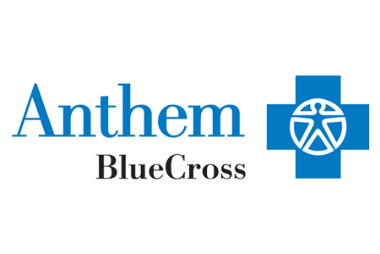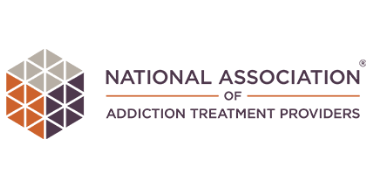Our Southern California detox program aims to help you or a loved one recover in both luxury and peace. Our facility is equip to help patients recover from a wide range of addictions.






Our facility is nestled in the serene city of San Juan Capistrano, providing an ideal setting for individuals seeking to begin their journey toward recovery. As experts in managing withdrawals from various substances, including alcohol, fentanyl, cocaine, and benzodiazepines, our approach is tailored to meet the unique needs of each client. We ensure a safe, controlled environment for detoxification, which is the critical first step in overcoming addiction.
Our program not only focuses on the physical aspects of detox but also integrates comprehensive support services to address the psychological challenges associated with drug withdrawal. This dual approach helps prepare our clients for the next stages of treatment, reinforcing our commitment to not just immediate detoxification, but to long-term recovery and well-being. With our experienced staff and state-of-the-art facilities, Detox California stands as a beacon of hope for those looking to free themselves from the bonds of addiction and reclaim control over their lives.
A drug detox is the process through which the body eliminates toxins accumulated due to prolonged substance use. This process is carefully managed and medically supervised to ensure the highest levels of safety and comfort. Detoxification is essential as it addresses the physical dependency on drugs, clearing the way for effective therapy and rehabilitation. The goal of detox is to mitigate the physical symptoms of withdrawal, which can vary in intensity depending on the substance and duration of use.
During the detox phase, patients may experience a range of symptoms, from mild discomfort to severe withdrawal effects, which are professionally managed by experienced medical teams. Various strategies and medications are employed to ease these symptoms, support the body’s natural healing processes, and prepare the individual for the next steps in their recovery journey. This crucial phase is foundational, as it helps individuals transition from a state of physical dependence to a readiness for therapeutic interventions that address the psychological, emotional, and behavioral aspects of addiction.
Social detox involves a non-medical environment where patients can detox with peer and professional support but without pharmacological intervention. This method is often suitable for those with a mild to moderate dependency, where withdrawal symptoms are expected to be less intense and medically manageable. Social detox settings emphasize emotional support and encouragement in a community-like atmosphere, which can significantly benefit individuals motivated by social interactions. The choice between medical and social detox should be based on a thorough assessment of the patient’s substance use history, physical health, and personal circumstances, ensuring that the approach aligns with their specific recovery needs.
The timeline for drug detox can vary significantly depending on the substance involved, as each drug affects the body differently and leads to distinct withdrawal patterns. While the duration and severity of symptoms can also depend on factors like the duration of use, dosage, and individual health, general timelines can be outlined for common substances:
Detox typically starts within 8 hours of the last drink, peaks around 24 to 72 hours, and can last up to several weeks for severe cases.
Withdrawal symptoms may appear within 1 to 4 days, peak in the first two weeks, and gradually lessen over several weeks or even months, depending on the length of use and the type of benzodiazepine.
Symptoms generally begin within 12 hours for short-acting opiates and within 30 hours for longer-acting ones, peaking within the first few days and tapering off within a week to 10 days.
As a potent synthetic opioid, fentanyl withdrawal can begin within a few hours of the last dose, peaking within 2 to 3 days and lasting up to a week or more, with some symptoms potentially lingering.

At Detox California, we accept most major insurance providers. Reach out to us to see if we accept your insurance today.

In the management of withdrawal symptoms during drug detox, certain medications play a critical role in providing comfort and safety. These medications are specifically designed to reduce cravings and withdrawal symptoms, stabilize the body’s functions, and help individuals focus on their recovery journey. Below are three commonly used medications in drug detox programs:
Buprenorphine is an effective medication used primarily for opioid detoxification. It works by partially activating the same brain receptors that opioids do, which helps to alleviate cravings and withdrawal symptoms without producing the high associated with opioid abuse. Buprenorphine can shorten the duration of detox, enable a smoother transition to maintenance therapy, and is often used in combination with naloxone to prevent misuse.
Methadone is a long-acting opioid agonist that is administered daily to help manage opioid dependence and withdrawal. By activating the opioid receptors in the brain at a slower, steadier pace, methadone reduces cravings and withdrawal symptoms without the euphoria of shorter-acting opioids. This makes it an essential tool in long-term detox and maintenance programs, allowing patients to rebuild their lives and adhere to treatment plans.
Vivitrol is a brand name for naltrexone, a medication used primarily in the management of alcohol and opioid dependence, post-detox. Unlike buprenorphine and methadone, Vivitrol is an opioid antagonist, which means it blocks opioid receptors and prevents any feeling of euphoria if the drug is taken. It is administered as a monthly injection, which can be beneficial for patients who struggle with daily medication adherence, thereby supporting long-term recovery.
Embarking on the path to recovery is a significant step, and choosing the right detox program is crucial to achieving long-term success. At Detox California, we provide a comprehensive and medically supervised detox process designed to manage withdrawal safely and comfortably. Whether you are struggling with dependencies on alcohol, opioids, benzodiazepines, or other substances, our tailored programs and expert medical team are here to support every step of your journey.
Recovery starts with a single step. If you or a loved one is ready to begin the journey toward a healthier, substance-free life, Detox California is here to guide and support you. Contact us today to learn more about our programs or to start your detox process. You can reach out by calling us or filling out the online contact form on our website. Take the first step towards a new beginning and a brighter future.
Drug detoxes can pose risks, especially if attempted without medical supervision. Detox California ensures safety through a medically supervised process where symptoms and potential complications are carefully managed by health professionals. Risks can be minimized with appropriate medical oversight and intervention.
Withdrawal symptoms can vary widely depending on the substance from which an individual is detoxing. Common symptoms include anxiety, nausea, tremors, sweating, severe cravings, and in some cases, seizures. The intensity and duration of these symptoms also vary based on the duration of use, type of substance, and individual health.
A variety of medications are used in detox to manage withdrawal symptoms and support recovery, including Buprenorphine, Methadone, and Vivitrol. These medications help reduce cravings and withdrawal symptoms, stabilize the patient's condition, and facilitate a smoother transition into ongoing addiction treatment.
While it's not possible to entirely prevent withdrawal symptoms, their impact can be significantly reduced through medically supervised detox. At Detox California, medical professionals administer appropriate medications and provide supportive care that eases the severity of symptoms and protects against health complications.
The most serious form of withdrawal is known as Delirium Tremens (DTs), most commonly associated with alcohol withdrawal. DTs can be life-threatening and symptoms may include severe confusion, hallucinations, high blood pressure, fever, and seizures. Immediate medical attention in a controlled environment like a detox center is critical to safely manage and treat this condition.






